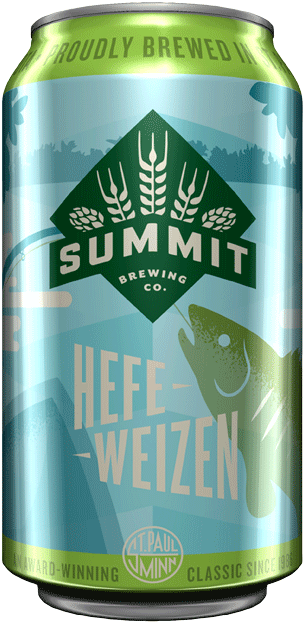Spoiler Alert: Summit Microbiologist Will Do Anything to Protect His Hefeweizen Yeast

Good, healthy yeast makes good-for-your-health Hefeweizen.
Perhaps by now you’ve gotten your hands on our old favorite summer seasonal Summit Hefeweizen. Effervescent, slightly dry, and truly refreshing, our classic German Hefe relies on a popular German yeast strain for its characteristic aromas of banana and clove. (And for its modest alcoholic content, of course.)
But just like any ingredient in beer — such as hops, malt, or water — yeast can be fickle. Summit Brewing Co. Microbiologist James Fetherston knows this as well as anyone; as a 5-year veteran of our Quality Assurance team, it’s his job to obtain, grow, and manage all of our brewery’s yeast strains until they’re needed for fermentation. He comes well-qualified, too, with nearly ten years of experience working as a production scientist and microbiologist, plus a BS in Biology from the University of Wisconsin Oshkosh.
“Mishandling a yeast strain can cause all sorts of problems,” Fetherston says, “including incomplete fermentation and off-flavors.” In other words, how yeast is managed can mean the difference between a high-quality craft beer consistently brewed to style and expectations, or a drain-pour that tastes like feet.
With an eye toward keeping bad beer out of your pint glass, Fetherston takes precautions even before the yeast we need is on site. First and foremost, he ensures a sterile work environment by following the Aseptic technique, a method designed to minimize the risk of cross-contamination and microorganism infection. In addition to cycling filtered air through his workspace, Fetherston uses a Tuttnauer autoclave — popular among doctors, dentists, and tattoo artists — to sterilize all of his equipment with hot water, steam, and pressure. Nothing is too good for your beer, FYI.

As seen in Doctor’s offices, Dentist’s offices, and even Tattoo Parlors.
With his lab in primo condition, Fetherston doubles down on preventive measures by ordering yeast samples in duplicate — “Just in case there are problems during inoculation [when yeast is added to wort]. That way, we always have a backup.” Scientists are smart.
Shipped in tiny beakers sandwiched between layers of Styrofoam, the cultures of living, breathing fungus arrive at the brewery and are carefully guided through propagation — the process of adding the yeast to progressively larger samples of wort and stimulating growth. During this step, Fetherston uses a shaker machine to stimulate cell growth, which is approximately five billion percent more efficient than shaking the samples by hand.

Before it could produce aromas of banana and clove in our Summit Hefeweizen, this little yeast culture had to grow big and strong in our Microbiology lab.
Eventually the cultures grow large enough to fill a 20-liter Carlsberg Flask. “This is basically a giant milk jug where we oxygenate the yeast,” Fetherston says. “Yeast can’t grow without oxygen, and if it’s healthy and at a good cell count, the yeast will use it up and then be ready for fermentation.”
After the brewers pitch the yeast and the beer starts fermenting, Fetherston continues to monitor cell counts, attenuation (how much sugar the yeast is eating), and fermentation temperature. “The fermentation temp drives flavor,” he says. “A high temp will lead to more banana esters and a low temp will lead to clove phenols, so we keep it under control to make sure the final beer turns out how we want it.”
On top of all that and throughout all stages of the brewing process, Fetherston tests samples of yeast cultures, wort, fermenting beer, and packaged product for foreign bacteria and a variety of wild, naturally occurring yeasts.

Our microbiologist is always looking for traces of wild yeast and other spoilers in our beer, but guess what… He never finds away.
“What goes into your beer is just as important as what you keep out of it,” he says. “If you can’t control for those things, how can you give your customer good, consistent beer?”
The answer to that question is simple: You can’t.

